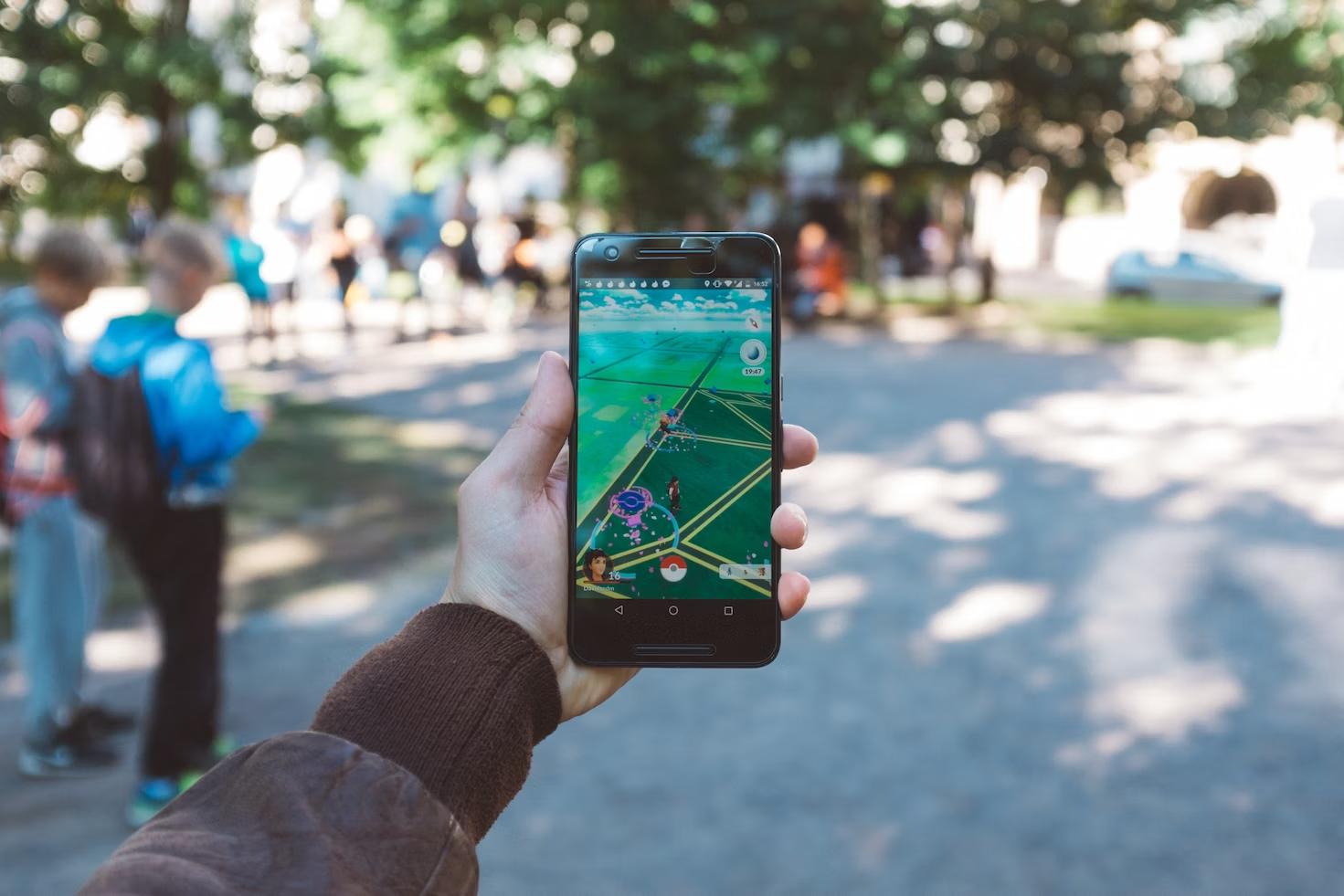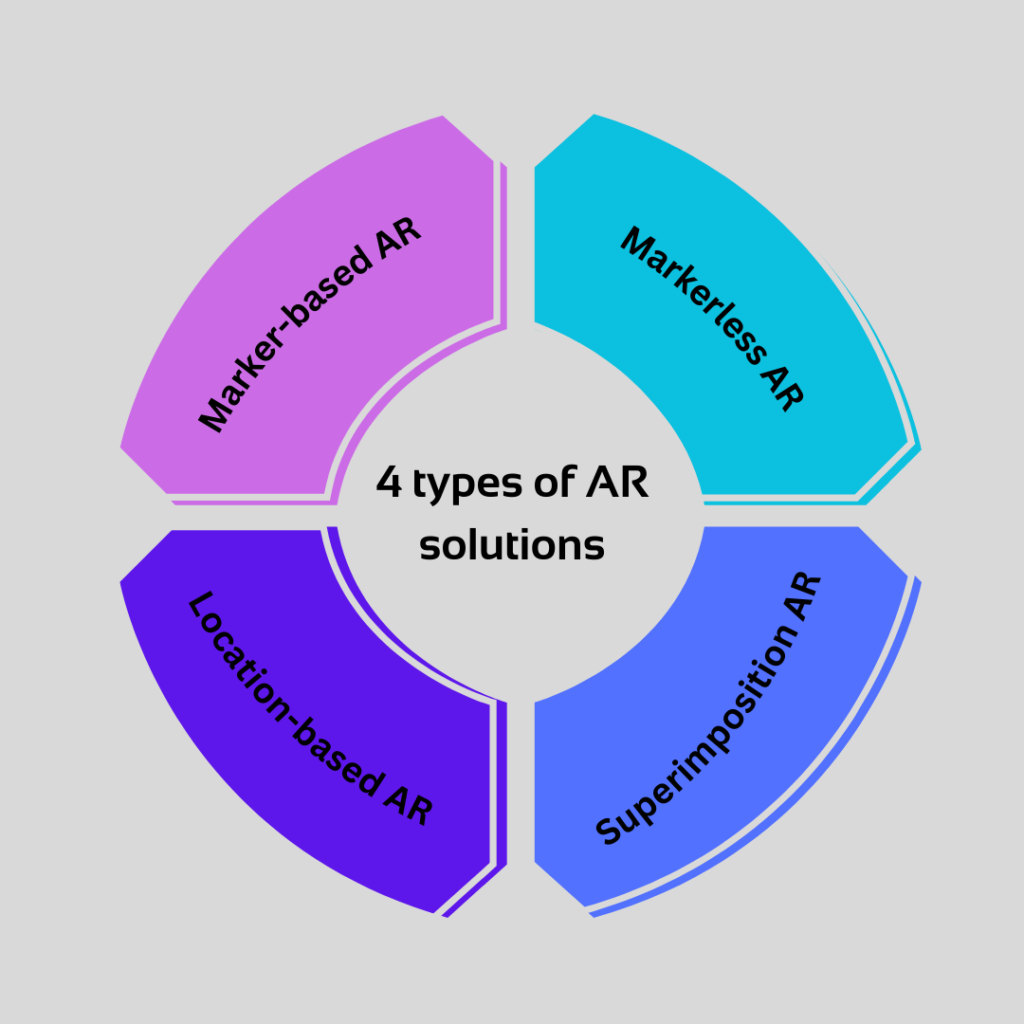Augmented reality and real-world examples of its implementation


The market of Augmented reality solutions is expected to reach $71.17 billion by 2025. As technology is practically omnipresent, you probably considered implementing AR functionality into your app. In this post, we will dwell on how to create augmented reality digital spaces to level up companies’ performance across various business segments. The PNN Soft team has extensive experience building 3D models based on AR and providing a real-live shopping experience within our solutions. As the technology went beyond the entertainment and e-commerce industry, we have also created solutions for the construction, education, and real estate sectors with augmented reality at their core. Thus, from our experience, we have learned how to efficiently link real business world and virtual data.

Augmented Reality, as a cutting-edge technology, has three primary functional components:
The technologies and platforms applied in the development of augmented reality solutions are subject to a variety of variables. Such factors as the type of hardware and the available power of the device influence the choice. It is also important to consider cross-platform and native development issues. Native augmented reality app development allows developers to take advantage of the power of a device. Cross-platform apps minimize the development time. This factor influences the choice of mobile AR development platform. For instance, ARCore is used for Android-augmented apps, while ARKit is used by developers for iOS.
Sephora, Pokémon Go, and IKEA Place are the most notable examples of AR-based apps. If you aim not to create a single AR feature as a software highlight but rather to obtain a consistent and multifunctional AR app development, please keep reading.

Such application types imply a specific “marker” (it can be either a QR code or other images); 3D content is usually placed on top of the marker’s area. Developers typically take advantage of marker-based AR to create indoor navigation platforms. For instance, the user scans the marker to build a route with the help of AR pointers to reach a particular destination point.
2. Markerless AR
Systems with no markers detect environmental patterns and sensors via a camera, and several typically used technologies, such as digital compass, GPS, depth sensors or accelerometer. On the top of diverse data sets are Machine Learning algorithms; PNN Soft developers apply them for better 3D content rendering. Markerless augmented reality app development is widely implemented to empower try-on solutions, which may, for instance, allow you to understand how a piece of furniture would look in your apartment.
3. Location-based AR
For each type, when customers arrive at a particular location, the app can provide virtual content to see and interact with. Similar to marker-based systems, this type of platform uses GPS, an accelerometer, and a digital compass. For narrowing down the position of gadgets, BLE technology is often applied. PNN Soft experts have created stable and efficient location-based AR solutions for the travel industry to conduct excursions or better inform clients on navigation in the big cities.
4. Superimposition AR
In this kind of software, you would need to superimpose a virtual object on top of another one to build augmented reality. For instance, if your coffee table can change its colour via an app, the solution contains superimposition AR. Another example of this AR mechanism is platforms that show users how city districts looked some years ago by accessing Google Maps archives.
Except for well-known cases of equipping eCommerce and Retail with AR tools to enhance the shopping experience, we have more examples of how you can benefit from Augmented reality in 2023.

One example of successful implementation of AR in the industry is MicroSoft HoloLens, enabling doctors to gain detailed human anatomy understanding significant for tumour identification, visualising blood flow and performing surgeries. Augmented reality in healthcare is also closely intertwined with training therapists, for which 3D modelling of chemical processes and human anatomy are helpful.
As we already mentioned, instead of giving paper brochures to clients, travel agencies can build augmented reality applications to inform visitors about historical places. Moreover, it is possible to organise thematic meetings where tourists may live through historical events of a given location.
First, architects may evaluate how buildings with different styles look in natural landscapes. Second, real estate agents can optimise their work by showcasing projects of buildings or available apartments to potential investors or clients
Augmented reality app development is no less helpful for military purposes. For example, special goggles are utilised for better ground navigation. AR technology enables wearers to gather more information on locating positions and their surroundings, which is crucial for defence forces.
The advantage of technology is the attraction of students to the educational process. The augmented reality of a potentially boring learning process can turn into an exciting and interactive learning tool. It can be used both for pre-school children and for exact sciences among university students.

We hope to have shed some light on AR real-life use cases. With our solid experience in creating innovative solutions for healthcare, education, beauty, finance and banking, media and entertainment, we are aware of what technologies are especially beneficial for your business.
Our skilled AR developers, who never stop exploring new technological tendencies, have learned how to overcome the current limitations of AR frameworks and, thus, are ready to develop precise and accurate Augmented Reality experiences. If you have more questions on how to create augmented reality solution or are directed to refine your system with cutting-edge AR tools, please contact the PNN Soft team.